
Canyon Lake UMC honored to remember the children
"We are all children of God. We are all of sacred worth. No one should be left unremembered by us," said Rev. Dan Bader, district superintendent for the Southwest District of the Dakotas Conference.
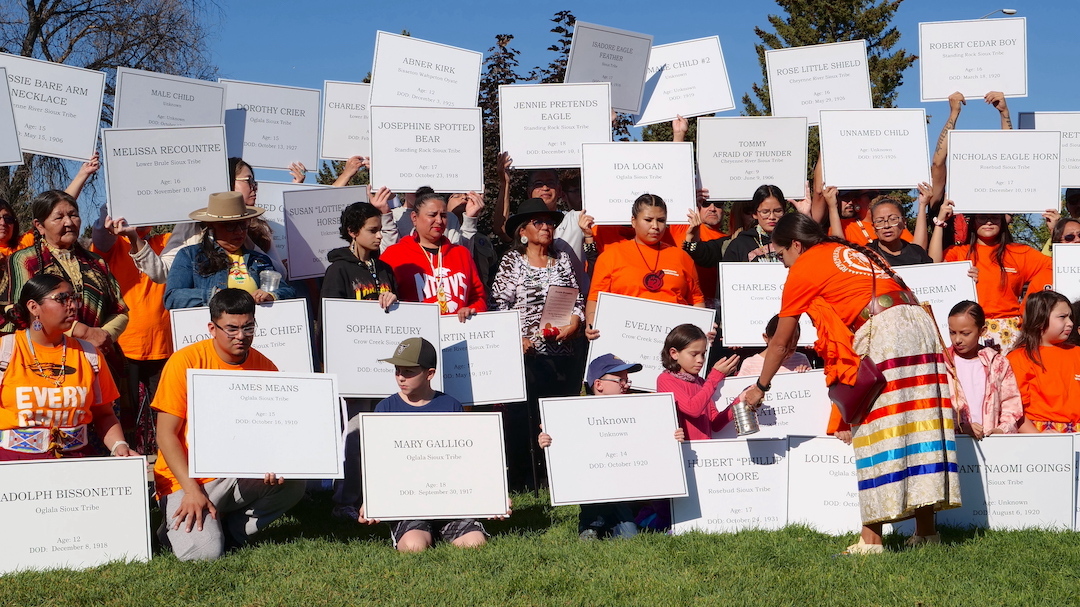
Adults and children, including some family members, hold up a name sign for each of the Native children who never returned from the Rapid City Indian Boarding School. Photos by Dave Stucke, Dakotas Conference Communications.
Each year 50 children are remembered at the Remembering the Children Walk. In the fifth year, the walk started at Sioux Park with prayer, song, and reading of the names. Next, each of the 50 children was remembered with a sign carried by a child or family member of the deceased. Then, participants traveled from the park to the Oyate Health Center, formerly known as Sioux San Hospital. The walk ended at Canyon Lake United Methodist Church.
The known and unknown children died while in attendance at the Rapid City Indian Boarding School. Causes of death range from disease to side effects of malnutrition to freezing to death while attempting to escape. Their names are listed here.
Sacred ground
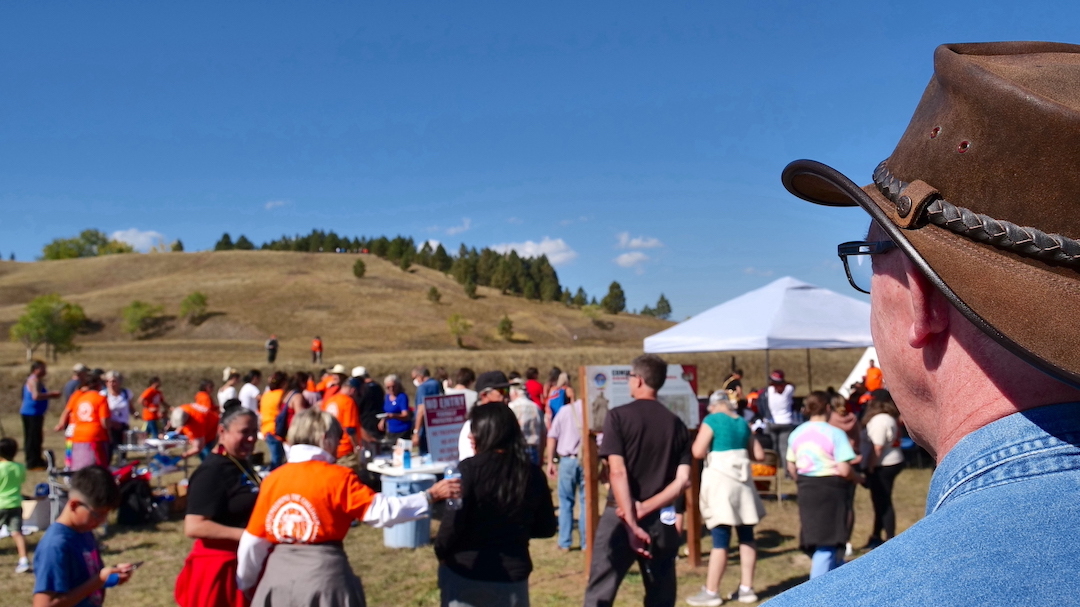
Rev. Scott McKirdy listened to the speakers at the future site of the Remembering the Children memorial.
"We are on ancient sacred ground. Yet, as sacred as this ground is to us as the church, it has been, for far longer, and in far deeper ways, sacred ground to those before us," said Rev. Scott McKirdy, lead pastor at Canyon Lake United Methodist Church.
Under the leadership of Rev. DeAnn Eidem, Canyon Lake UMC spent time learning, discerning, and praying about how to help honor the children who died decades ago while attending the Rapid City Indian School (RCIS). As a result, the congregation has granted an easement for a road across church property so that people can visit the Remembering the Children Memorial. Read the history of Canyon Lake UMC's journey.
In the 1940s, the Dakotas Conference purchased the land that once was Rapid City Indian School to build what is now Canyon Lake United Methodist Church. Today, Canyon Lake UMC is allowing the right of way to access the memorial. The land where the graves are and the memorial will be built is not accessible from the streets. People will travel east to west, a sacred pathway, to enter the memorial.
"None of the graves are on church property. The area is landlocked. Canyon Lake is enabling a right of way for an access road to the memorial itself," said McKirdy. "That enables us to enter into a deeper conversation with the Oyate, the tribes, and eventually the state. It is a cooperative effort to make this work."
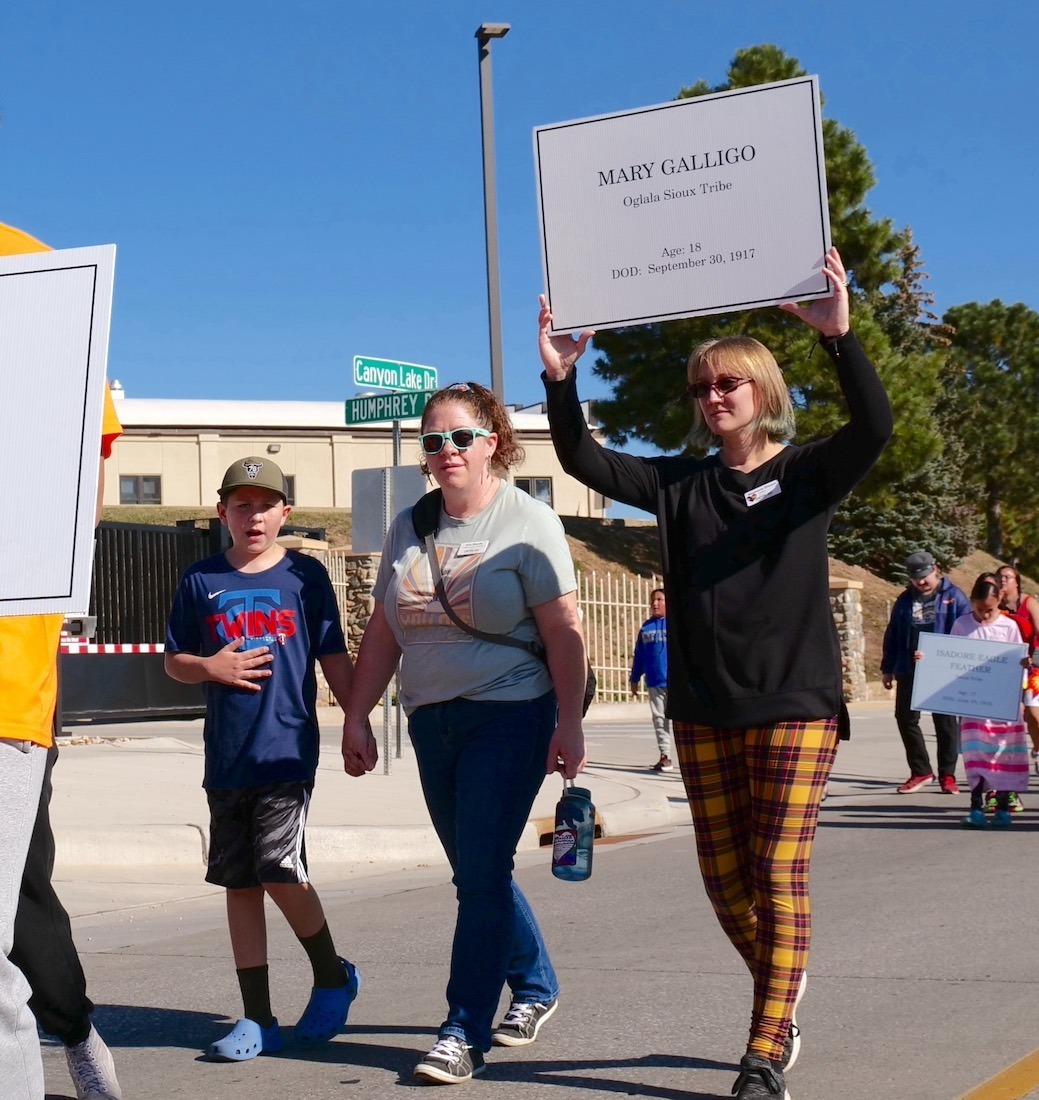
Rev. Stephanie Eliason, right, walks with Erin Woods and Joe Woods of Canyon Lake UMC.
In the late 19th and early 20th centuries, Native American children were plucked from their families and forced to attend the Rapid City Indian Boarding School. By official government policy, they were stripped of their roots. Braids were shorn and their language forbidden. The personal and cultural disruptions reverberated throughout the students' and their descendents' lifetimes.
Learning from the past
"It is terrifyingly powerful, the emotions you feel, and the emotions that everyone brings to it. We benefitted from a lot of pain that others felt. Our church property butts up to the land where these graves are," said Rev. Stephanie Eliason, teaching pastor at Canyon Lake UMC. "We gained this land from the school and the hospital that ceased to exist. We benefitted from that. We can't change the past. But, we can change how we see it in the future, react to it, and treat each other."
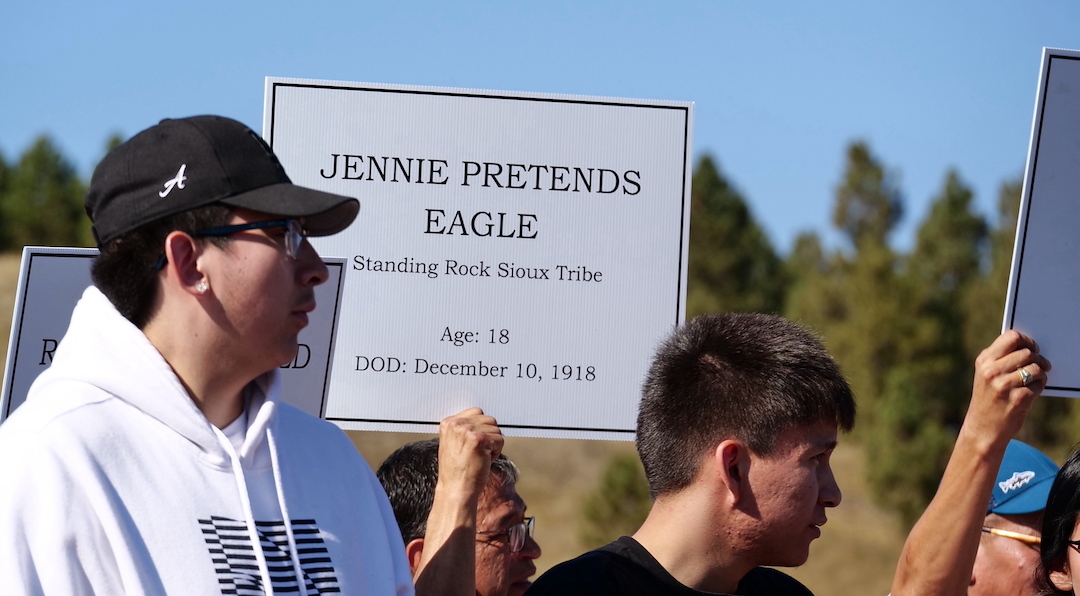
Children like Jennie Pretends Eagle from the Standing Rock Sioux Tribe died at the Rapid City Indian Boarding School at 18 years of age, on December 10, 1918. The cause of death is unknown.
Phyllis Young told the story of finding her grandmother's grave. "My grandmother went missing from the enrollment rolls in 1918. We never knew what had happened to her. Where she might be," said Young. "Here, a grave marker says J. P. Eagle. One year she went missing from the boarding school records."
Two of Jennie's grandchildren were present at the Remembering the Children Walk. After 100 years, the family held a memorial to give Jennie Pretends Eagle a proper passage from this earth.
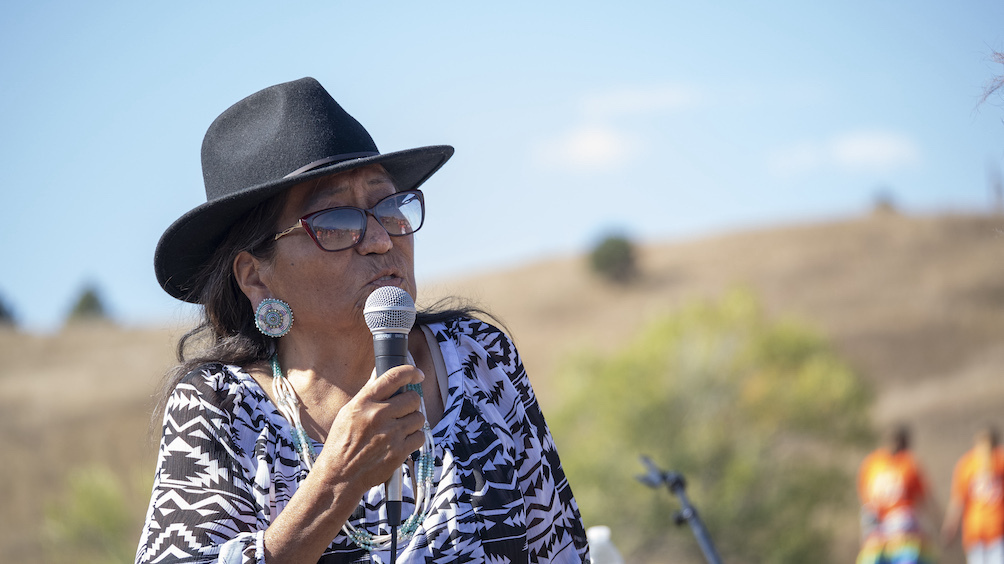
Phyllis Young, granddaughter of Jennie Pretends Eagle, spoke to the people before and after the memorial walk. Here she explained the origin of a buffalo hide painting, depicting boarding school scenes.
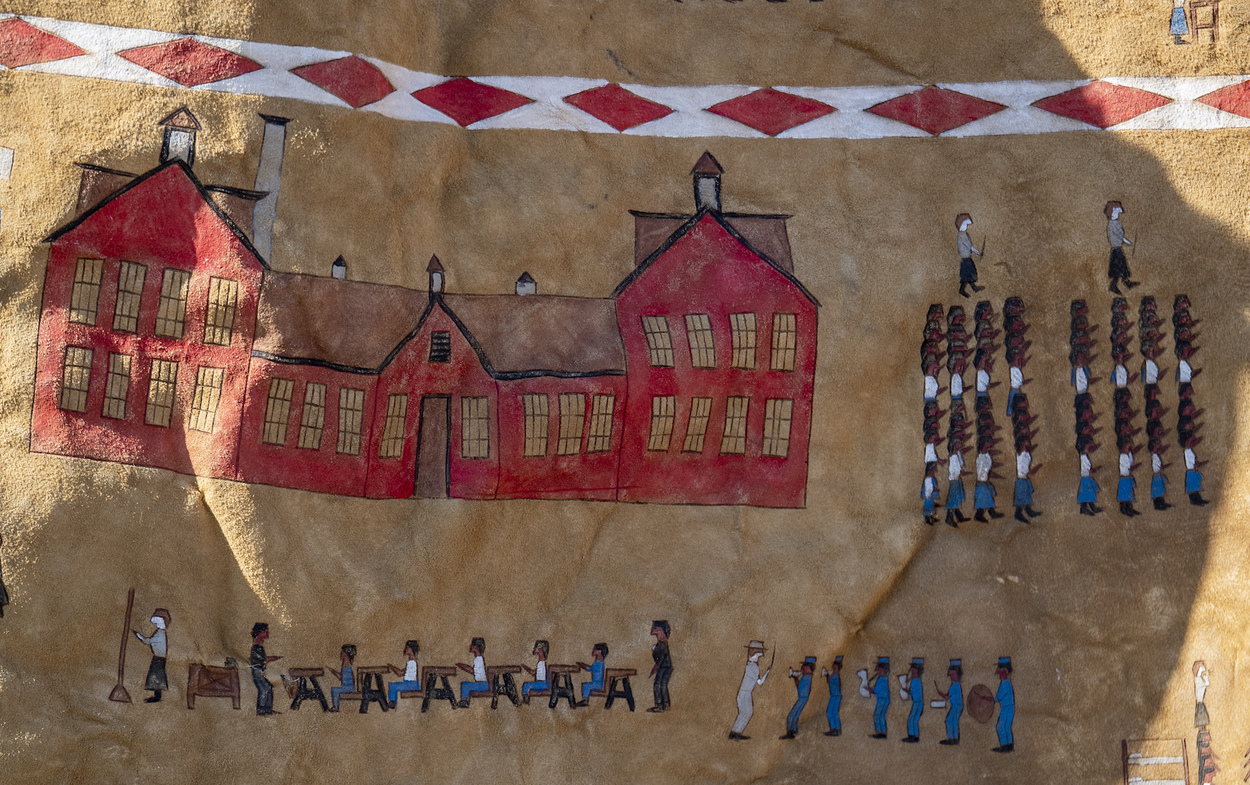
"We were able to sing her song and give her a rite of passage. I am very grateful for that," said Young. "I am now looking for my grandfather, Barney Pretends Eagle. He is missing from Carlisle [boarding school]. We are descendants of our ancestors who paid the price."
There were more than 400 United States government-funded Native American boarding schools, often run by churches. Many children across the nation were left in unmarked graves and forgotten.
The Rapid City school was operated by the Bureau of Indian Affairs from 1898 to 1933 to assimilate Native American children. By the 1920s, enrollment grew to 340 students. Fifty children died at the school. Several Canyon Lake UMC congregation members and the entire staff walked in honor of the children that died at RCIS.
Being the church
"It was awesome to see the community, multiple communities come together today," said Matt Bader, youth ministry coordinator at Canyon Lake UMC. "It is important that we, as members, leaders, and staff of the church, are here to remember the children. This is being the church. It was very powerful. This is something that affects all of us. We are all connected."
The second Monday in October, in place of Columbus Day, is observed as Native American Day in South Dakota.
"I think it is important that we have a day, a time, and a place to say what needs to be said. To be together sharing and honoring each other," said Steve Allender, mayor of Rapid City, before he read the proclamation declaring Monday, October 10, 2022, the Day of the Grandmothers. "This is a day to honor the memory of the children who died at the Rapid City Indian School."
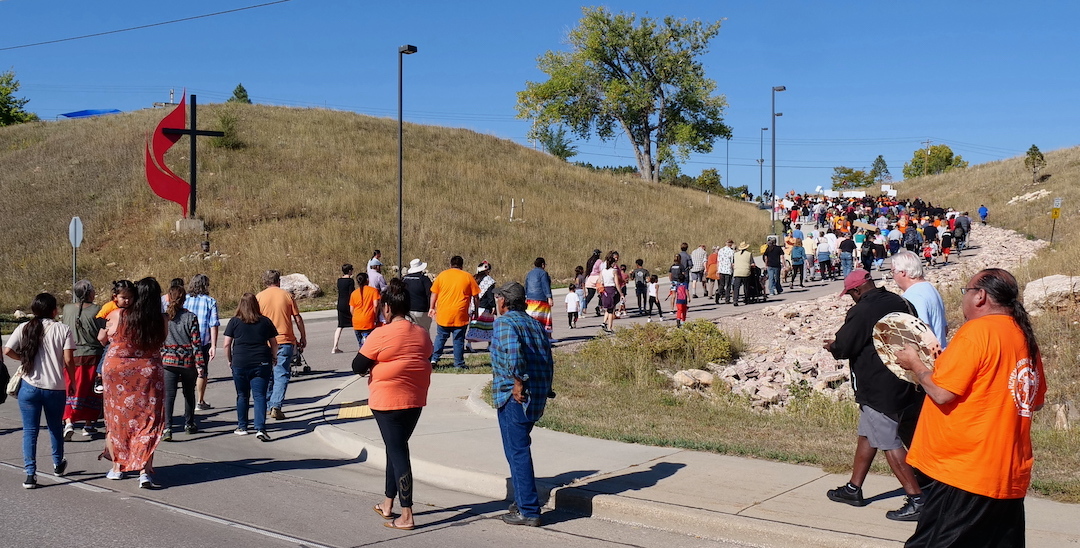
People of all ages walked up the Rapid City Canyon Lake UMC driveway to access the memorial site.
Hundreds turned out for the 2022 Remembering the Children Memorial Walk. After the walk, participants gathered in the field north of the Canyon Lake UMC church buildings and near the Remember the Children Memorial site.
Construction for the memorial is expected to begin this fall, with completion in May 2024. Children who died while attending the Boarding School will be remembered forever at the memorial site.
"I think about the words of scripture that say, 'we are beloved children of God.' These people are working not to forget and remember that God never forgets who you are," said Rev. Dan Bader. "I was humbled when unknowns were stated—unknown names, ages, and places. Today the unknowns are remembered. It was incredibly humbling. We have an opportunity to be a people who are united in faith rather than divided."
Click on this image to view a Flickr photo gallery from the event:
